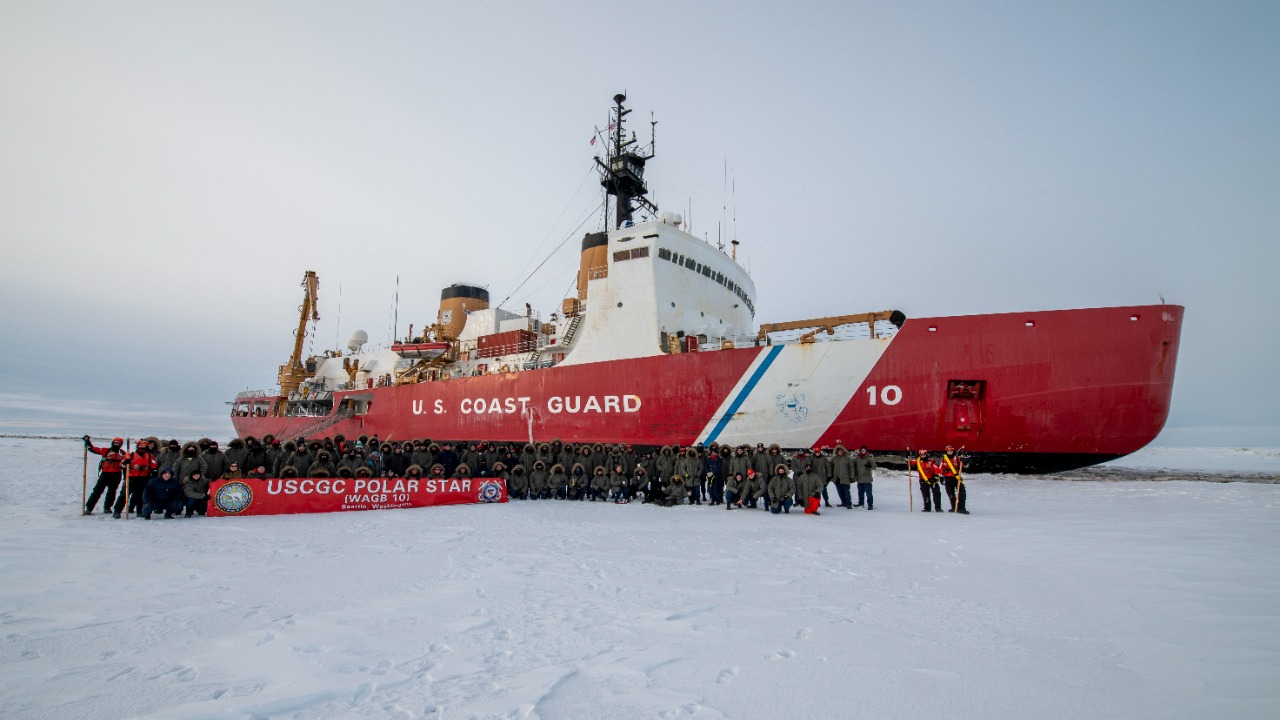
The USCGC Polar Star, a 399-foot icebreaker, once showcased its formidable power by breaking through ice as thick as 40 feet. This impressive feat occurred during a 2017 operation in the Bering Sea, where the vessel freed the trapped cargo ship MV Nanuq near Nome, Alaska. The operation highlighted the ship’s 75,000-horsepower propulsion system’s ability to navigate extreme Arctic conditions, where ice thickness averaged 20-30 feet but peaked at 40 feet in pressure ridges.
Design and Capabilities of the USCGC Polar Star
The Polar Star, built in 1972, is a marvel of engineering. Its 399-foot length, 13,500-ton displacement, and reinforced steel hull are designed for icebreaking up to 6 feet continuously, with the ability to ram through thicker formations when necessary. This capability is a testament to the ship’s original construction specs from Lockheed Shipbuilding.
The ship’s propulsion system is equally impressive, featuring three diesel-electric engines that deliver 75,000 shaft horsepower. This power enables the Polar Star to maintain speeds of 3 knots through 6-foot ice. A series of upgrades in 2013 restored the ship’s full ramming power after years of limited operations. The vessel also boasts specialized features like an ice knife bow and a helicopter deck for Arctic support, including the capacity for two MH-60 Jayhawk helicopters.
Historical Context of Arctic Icebreaking Missions
Since its commissioning on January 18, 1976, the Polar Star has played a crucial role in over 20 Antarctic summers and numerous Bering Sea operations. The ship has been instrumental in key deployments supporting Operation Deep Freeze, navigating the icy waters of the Antarctic and the Bering Sea.
In the 1980s, the Polar Star faced significant challenges, such as breaking trails for resupply ships to McMurdo Station, Antarctica. Here, the vessel encountered multi-year ice up to 10 feet thick. The ship has also been involved in scientific research, carrying up to 25 scientists for ice core sampling and oceanographic studies.
The 2017 Bering Sea Incident
In January 2017, the Polar Star was deployed from Seattle to assist the MV Nanuq, a 360-foot Canadian cargo ship stuck in 20-foot ice 100 miles offshore from Nome, Alaska. The Polar Star conducted 12 deliberate impacts over three days to create a 10-mile channel through ice ridges reaching 40 feet, freeing the Nanuq on January 21, 2017.
Capt. Matt Walker, the commanding officer, praised the crew’s expertise and the Polar Star’s power. “The Polar Star’s power and the crew’s expertise turned what could have been a multi-week delay into a swift rescue,” he said.
Challenges and Risks in Extreme Ice Conditions
Icebreaking operations in the Bering Sea present numerous environmental hazards. Pressure ridges can form 40-foot-thick ice due to wind and currents, and the Polar Star sustained minor hull stress during rams. Crew safety protocols are also critical, with 24-hour watch rotations for 150 personnel and emergency drills for hypothermia in -20°F temperatures.
Logistical strains also pose challenges. For instance, limited fuel efficiency drops to 1 knot per gallon in thick ice, requiring precise navigation via GPS and ice radar.
Legacy and Future of Icebreaking Operations
The Polar Star’s status as the U.S.’s only heavy icebreaker since the Polar Sea’s decommissioning in 2010 underscores its role in national security amid increasing Arctic shipping. The ship underwent a $60 million dry-dock repair in 2020 to extend its service life to 2040, addressing engine wear from decades of ramming.
The Polar Star’s operations also have international implications. The ship has collaborated with Russian icebreakers in joint rescues, such as the 2012 incident freeing the Nordic Orion. These collaborations highlight the importance of international cooperation in ensuring safe and efficient Arctic navigation.